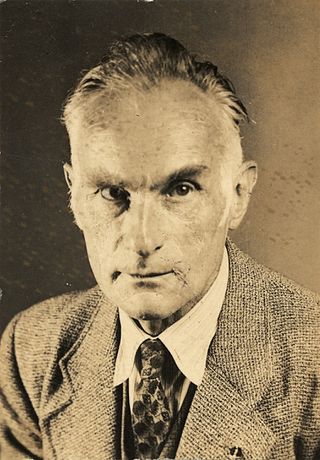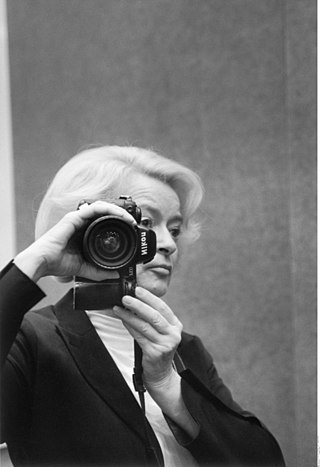
Heinrich Frauenlob, sometimes known as Henry of Meissen, was a Middle High German poet, a representative of both the Sangspruchdichtung and Minnesang genres. He was one of the most celebrated poets of the late medieval period, venerated and imitated well into the 15th century.

The Prussian Academy of Arts was a state arts academy first established in Berlin, Brandenburg, in 1694/1696 by prince-elector Frederick III, in personal union Duke Frederick I of Prussia, and later king in Prussia.

Hans Unger was a German painter who was, during his lifetime, a highly respected Art Nouveau artist. His popularity did not survive the change in the cultural climate in Germany after World War I, however, and after his death he was soon forgotten. However, in the 1980s interest in his work revived, and a grand retrospective exhibition in 1997 in the City Museum in Freital, Germany, duly restored his reputation as one of the masters of the Dresden art scene around 1910.

Karl Albiker was a German sculptor, lithographer and teacher of fine arts. Albiker studied with Auguste Rodin in Paris. From 1919 to 1945 he was a professor at the Dresden Academy of Fine Arts. His monumental statues, like those of Georg Kolbe, reflected National Socialist heroic realism. Albiker created the relay racers for Berlin's Reich Sports Field and various war monuments, including those in Karlsruhe, Freiburg im Breisgau, and Greiz.
Doris Schöttler-Boll was a German artist. She is known for her de-constructivist works that she initially described as a result of Photomontage and Collage.
Siegfried Obermeier was a German author of historical novels and popular history books. He was editor of The Secret Diaries of Ludwig II of Bavaria 1976. In 1978 he issued his first novel, initially under the penname Carl de Scott, a novelisation of the second life of Judas Iscariot. His Jesus in India book "Starb Jesus in Kaschmir?" made it to the Year Bestseller List of the Spiegel in 1983.

The Munich Secession was an association of visual artists who broke away from the mainstream Munich Artists' Association in 1892, to promote and defend their art in the face of what they considered official paternalism and its conservative policies. They acted as a form of cooperative, using their influence to assure their economic survival and obtain commissions. In 1901, the association split again when some dissatisfied members formed the group Phalanx. Another split occurred in 1913, with the founding of the New Munich Secession.
Michael Diers is a German art historian and professor of art history in Hamburg and Berlin.

Erika Stürmer-Alex is a German artist whose works include wall paintings, panel paintings, printed graphics, collage sculptures, polyester sculptures and installations.

Max Frey was a German painter and graphic artist associated with the Symbolism and New Objectivity movements. Some of his works contained elements of magical realism

Annot, also known after her marriage as Annot Jacobi, was a German painter, art teacher, art writer and pacifist. As a result of political hostility in Germany, she spent much of her life in the United States and Puerto Rico.

Anna Louise Adolphine Eduardine Gerresheim was a German landscape artist, portrait painter and etcher. She was among the founders of the artist's colony in Ahrenshoop on the Baltic Sea.

Angelika Platen is a German photographer known internationally for her portraits of artists.

Jenny Bürde-Ney was a German operatic soprano. She performed many leading roles in prestigious opera houses, and later became a singing teacher.
Hannes Kilian was a German photographer.
Anna Plate was a German painter. She was a prolific creator of still lifes, watercolor flower paintings, street scenes and portraits.

Georg Oeder was a German Landscape painter of the Düsseldorf school of painting.

Philippine Wolff-Arndt was a German painter. Despite difficult access to an artistic education, she was active in this profession throughout her life. She was also committed to socially disadvantaged people and campaigned for women's rights, for example as a co-founder of the Leipzig Women Artists' Association. In Leipzig, she also fought for the Hochschule für Grafik und Buchkunst Leipzig to be the first art academy in Germany to admit women to study.
Ottilie Reylaender was a German painter. She was one of the pioneers of modern art in Germany.

Laying out the March Dead is an oil painting by the German artist Adolph Menzel, from 1848. It shows a crowd of people on Berlin's Gendarmenmarkt. The figures are attending the Coffin Laying of civilians who died during the Berlin March Revolution. Menzel attended the ceremony and during the event – or shortly afterward – he began work on the first studies for the painting. The lower left corner of the painting is not executed in oil paint, which is why most scholars consider it to be unfinished. Art historians disagree about the possible political or aesthetic motives of the painter for this. The painting belongs to the group of revolutionary paintings that were rarely created in Germany.















